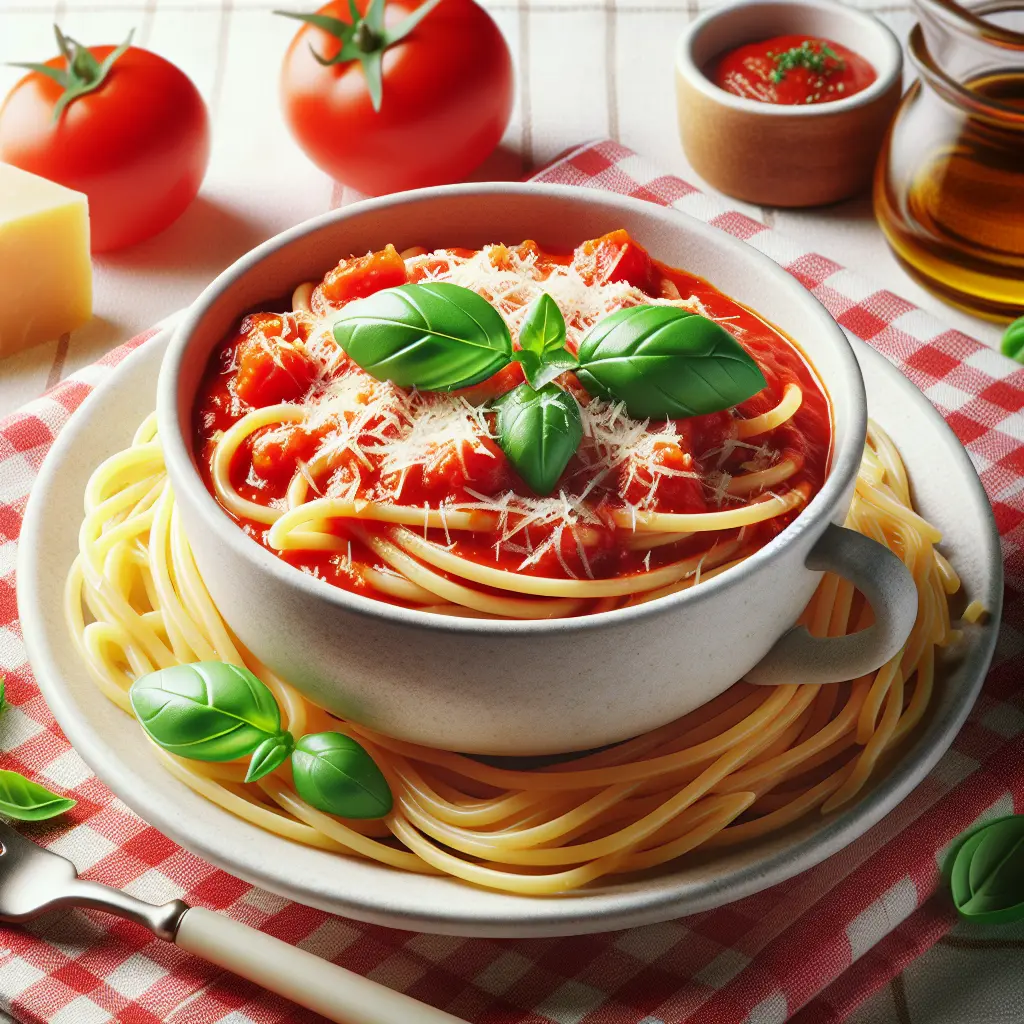The History and Origins of Pasta Pomodoro
Pasta Pomodoro, a staple of Italian cuisine, has its roots in the vibrant region of Campania, specifically the city of Naples. The dish's humble beginnings can be traced back to the 18th century, where it was a simple yet satisfying meal for the working class. Over time, Pasta Pomodoro gained popularity and spread throughout Italy and beyond, becoming a beloved dish enjoyed by people worldwide.
Ingredients: A Symphony of Flavors
At the heart of Pasta Pomodoro lies a harmonious blend of fresh, wholesome ingredients:
- Pasta: Typically made from durum wheat flour, the pasta provides a sturdy base for the flavorful sauce.
- Tomatoes: Ripe, juicy tomatoes form the foundation of the sauce, imparting a vibrant red hue and tangy sweetness.
- Olive Oil: Extra-virgin olive oil adds a rich, fruity flavor and healthy fats to the dish.
- Garlic: Aromatic garlic adds depth and complexity to the sauce.
- Onion: Sweet and slightly pungent, onions provide a subtle backdrop for the other ingredients.
- Basil: Fresh basil leaves add a bright, herbaceous note that complements the tomatoes perfectly.
Nutritional Value: A Balanced Delight
Pasta Pomodoro offers a well-balanced nutritional profile in each serving (1 cup):
- Calories: 318
- Protein: 9.2 grams
- Fat: 12 grams (primarily monounsaturated and polyunsaturated)
- Carbohydrates: 45 grams
- Fiber: 4.3 grams
- Sugar: 6.7 grams
This combination of nutrients provides a satisfying meal that can fuel your body and tantalize your taste buds.
Cooking the Perfect Pasta Pomodoro: A Step-by-Step Guide
To recreate the magic of Pasta Pomodoro in your own kitchen, follow these step-by-step instructions:
- Gather your ingredients: Ensure you have all the necessary components before starting.
- Prepare your sauce: Sauté onions and garlic in olive oil, then add diced tomatoes and simmer until thickened. Season with salt, pepper, and fresh basil.
- Cook the pasta: Bring a large pot of salted water to a boil and cook the pasta according to the package directions.
- Combine sauce and pasta: Drain the pasta and add it to the prepared sauce. Stir to evenly coat.
- Serve and garnish: Plate the Pasta Pomodoro and garnish with additional fresh basil leaves or grated Parmesan cheese for an extra touch of flavor.
Variations and Adaptations: A Culinary Canvas
The beauty of Pasta Pomodoro lies in its versatility. Experiment with different variations and adaptations to suit your taste preferences:
- Add Vegetables: Enhance the dish with chopped bell peppers, zucchini, or mushrooms.
- Switch up the Herbs: Replace basil with oregano or thyme for a different aromatic experience.
- Use Different Pasta Shapes: Explore various pasta shapes such as penne, rigatoni, or fusilli to add visual interest.
- Create a Spicy Version: Add a pinch of red pepper flakes or chili powder to the sauce for a touch of heat.
- Make it a Vegetarian Meal: Omit the cheese and use vegetable broth instead of chicken broth to create a vegetarian-friendly version.
Conclusion: A Culinary Gem for All Occasions
Pasta Pomodoro, with its vibrant flavors, nutritional value, and versatility, is a true culinary gem that deserves a place in every home cook's repertoire. Whether you follow the classic recipe or experiment with variations, this dish is sure to impress your taste buds and leave you craving for more. So, gather your ingredients, fire up the stove, and embark on a culinary adventure that will transport you to the heart of Italy with every bite!
How many calories are in Pasta Pomodoro?
Each 1 cup of Pasta Pomodoro contains 318 calories.
Pasta Pomodoro Nutritional Information
| Nutrient | Amount per 1 cup (248g) |
|---|---|
| Calories | 318 Calories |
| Protein | 9.2g |
| Fat | 12g |
| Saturated Fat | 3.5g |
| Cholesterol | 0.011mg |
| Carbohydrates | 45g |
| Dietary Fiber | 4.3g |
| Sugar | 6.7g |
| Sodium | 0.244mg |
| Potassium | 0.5781mg |
| Calcium | 0.063mg |
| Iron | 0.0035mg |
